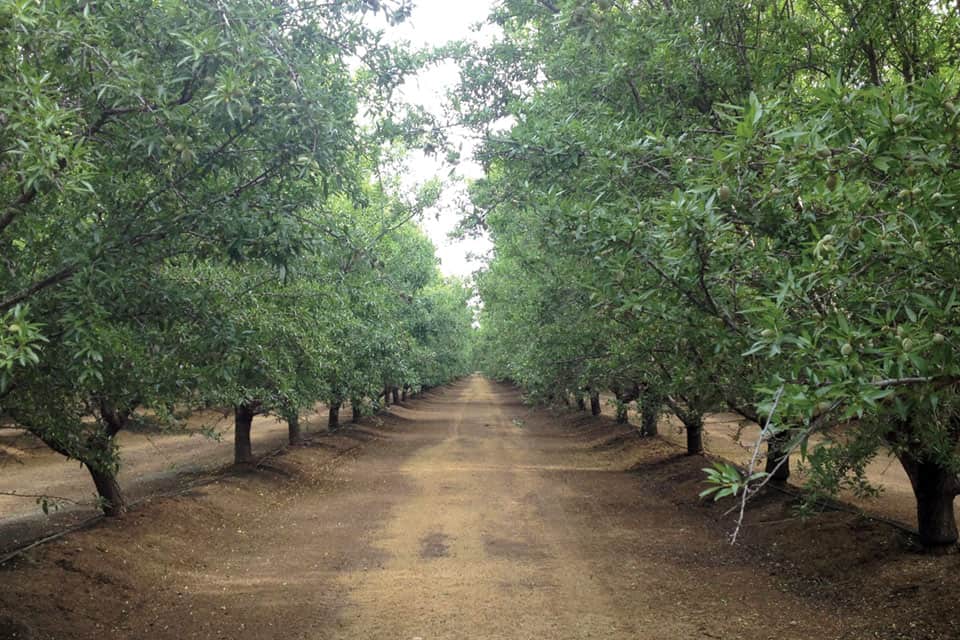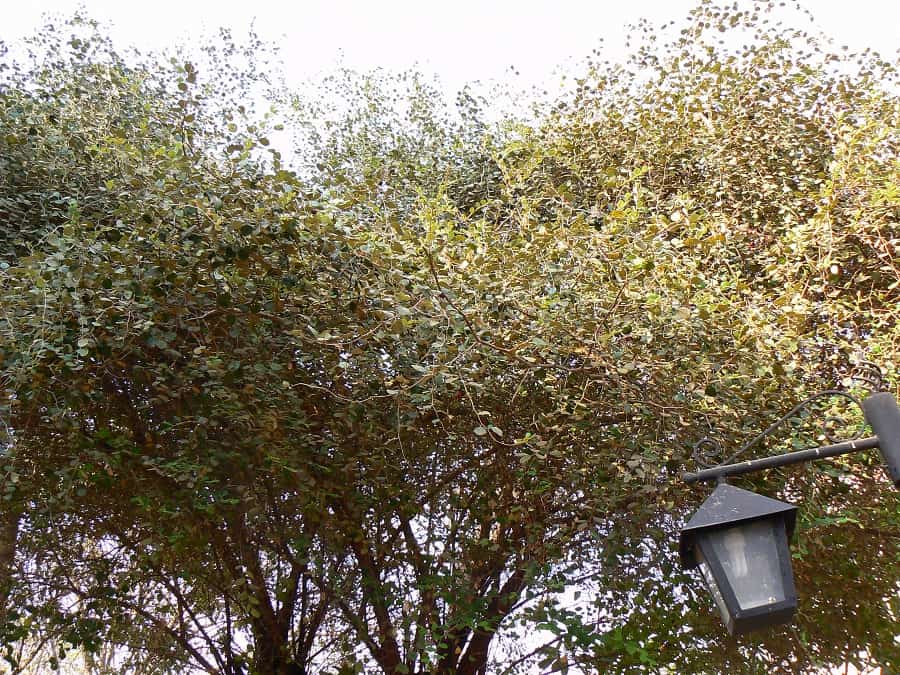Pollution has become a real threat in many parts of India, in the past decade alone. In fact, India has become quite popular throughout the world because of his issue, with 9 cities from India making the list of most polluted cities in the world in 2016
The only possible solution to this threatening problem is the planting of more trees. Unfortunately, trees take roughly 7 to 10 years to even grow to the optimum height before they are even capable of absorbing the toxic pollutants from the atmosphere….. with the exception of a few!
In this article, we’re going to talk about the five fastest-growing trees in India, and how you can benefit by planting them today.
Contents
1) Indian Wild Cherry
Prunusavium, as it is scientifically called, is commonly known as sweet cherry. This tree is native to Europe, Anatolia, and many parts of Western Asia. The Sweet Cherry tree grows up to 15 -32m tall and is one of the fastest-growing trees in India, taking just one year to reach its optimal height.

The leaves of the Wild Cherry are around 7 to 14 cm tall with widths varying between 1.6 to 2.8 inches. The flowers of these trees are often found to bloom in early spring, where the flower is about 2 to 5cm bearing about five pure white petals and stamens which are yellow. It also bears fruit and is also eaten by birds and mammals. The flowers also pollinate through bees.
Growing Tips
The tree requires an enormous amount of sunshine to reach its optimum height and to grow fast, so it is recommended to keep them where there is full exposure of sunshine.
The soil must be well-drained and must contain a huge amount of moisture to increase its efficiency.
Benefits
Wild cherry’s plants are astringent and diuretic and can be used as a tonic.
The plants are also used in the treatment of cystitis and edema.
By making some small incisions in the trunk of the tree an aromatic resin can also be made from it.
2) Neem Tree
The scientific name of this tree is Azadirachta India. It is native to India, Nepal, Pakistan, and Srilanka. Reaching up to heights of 15 to 20 meters, these are undoubtedly one of the fastest ones on this list, bearing fruits between the age of 3 to five years. It is also one of the evergreen trees in the Indian climate that can grow at all seasons.

The tree has a fairly dense crown, which is roundish and reaches about 66 to 82 feet. The flowers are arranged in axillary panicles that are up to 25 cm. Its flower, Protandrous, bisexual. Incidentally, the male flower exists in the same tree alongside Protandrous as well. The fruits and seeds are the ones that are used to form neem oil.
Growing Tips
This tree comes under the classification of a hardy tree that can tolerate temperatures up to 50 degrees (Celcius). However, at cool temperatures, it can maintain itself only up to 5 degrees.
The tree can be grown in well-drained soil to increase its efficiency. It can also be grown as a plant in trays and pots and also be transplanted outdoors for about three months.
Neem trees need a good amount of sunlight for their growth.
An appropriate amount of moisture is also essential for the proper nourishment of the tree.
There must not be excessive watering as it can destroy the tree.
A good practice is to apply fertilizers once a month, which can improve the tree’s growth tremendously.
Benefits
The plant’s oil can be used as a natural insect repellant and can also be used as an organic shampoo to treat dandruff.
It is used to treat black spots, powdery mildew, and sooty mold.
Neem tree’s barks can also be used as anti-inflammatory and antiseptic.
The flower can be employed for a sweet aroma and a calming effect.
The leaves can be used as a skin treatment for fungus and chickenpox.
The wood is clean-burning firewood in frost-free regions of the world and serves great for this purpose during cooler climates.
3) Kapok Tree
With the scientific name of Isceibapentandra, this tree is native to Mexico, Central America, the Caribbean, and west Africa. The tree is mainly cultivated for seed fiber, which has a range of medicinal and commercial uses. It is also called java cotton, silk-cotton.

The Kapok tree grows for about 240 feet tall during its lifetime. It contains buttress roots that extend up to 40-50 feet. The major branches are up to 6 feet in height.
The trees produce seeds that are inside the pods which are around 15cm and are yellowish fiber. The trunks are mostly covered by thick, prickly thorns. There are around 5 to 9 leaflets in the palmate each up to 20 cm long. Research shows that these trees are among the largest trees in the world.
Growing Tips
The Kapok tree needs well-drained soil to grow to its optimal height.
For photosynthesis this plant requires good sunlight so it is recommended to keep it at places where there is exposure to the sun.
It is also recommended to remove weeds from the base of the tree and also around them from their dripline.
Benefits
The tree is used to treat headaches and diabetes.
The vegetable oil prepared from extracting the seed can be used as a biofuel and in paint preparation. This also has an iodine value of 85- 100.
Kapok is also an astringent, diuretic herb as it lowers fevers, relaxes spasms and controls bleeding.
The leaves are also used as a sedative, alterative, emollient and laxative. Some of these leaves are mixed with palm oilsand mostly young leaves are preferred for this process.
They are used to treat scabies, diarrhea, and hoarse throat.
For mental illness, the sap is prepared for this process. For treating skin infections this sap can also be used.
For also treating heart problems the palm oil is taken on a regular basis.
4) Almond Tree
Native to Iran and surrounding countries, the almond tree is also called Prunusdulcis by scientists and botanists around the world.
This deciduous tree grows about 4 to 10 feet in height in its lifetime. The fruit is about is 3.5 to 6 cm tall. The exocarp is the outer layer and the thick, leathery coat called hull. The hull separates from the shell and abscission layer.

Almonds grow best during mild summer and wet winters. The tree starts bearing fruit during the third year from planting them. Between 15 to 16 degrees, the tree grows best. In the beginning, there is only one seed but occasionally two occur which is the nut.
Growing Tips
A hole must be dug, wide enough for the accommodation of the roots.
Fertile soil is a must for the growth of the nut trees.
The trees must be spaced 15 to 20 feet apart and must be irrigated often.
The application of nitrogen and organic fertilizers will help to increase the growth of the plant.
Benefits
Almonds contain Magnesium and Vitamin E which are significant nutrition factors for kids.
This also helps to lower blood sugar levels and reduces blood pressure. Almonds are also given as a diet to lose weight.
They are also used to improve memory.
5) Ber Tree
Also known as the Chinese date, or Indian Plum, The ber is one of the most popular trees on this list. It is found in various regions across India. Its fruits can help increase bone density and have several other medicinal purposes.

This tree is evergreen and can be found to be up to 15 meters high, with an even bigger trunk growing to about 40 cm or more. The fruit this tree bears can be about 2.5 inches big. It can be of different species depending on the variety.
The Ber tree can also be deciduous at times, with the growth of this mid-sized tree being vigorous.
Growing Tips
Make sure when you are planting the tree, to have the stem stand straight on the ground for about 75 cm. This is a very important process, in order to maintain steady and sturdy growth.
During the end of winter, prune the tree and thin the otherwise crowded branches to increase the fruit-bearing area.
Use a fertilizer like Phosphamidon 40 SL to reduce the growth of weeds near the tree.
Benefits
The ber fruit and the seed is used in Chinese practices as it is believed to help people sleep better.
The fruits also help relieve chronic constipation and anxiety.
They are also very good sources of Vitamin C, which helps in revitalizing skin and improving immunity.
Regulating Blood Pressure and Blood circulation is an added benefit to employing the fruits of the ber tree.
Those were the five fastest-growing trees in India, and with proper care and nutrition, they can be of benefit to the environment in numerous other ways excluding pollution control. And Fast.
If you like this article, then you should definitely check out our blog where we talk about all things gardening.
Be sure to head over to ElitechDrip to get special offers on garden irrigation kits and gardening tools.

